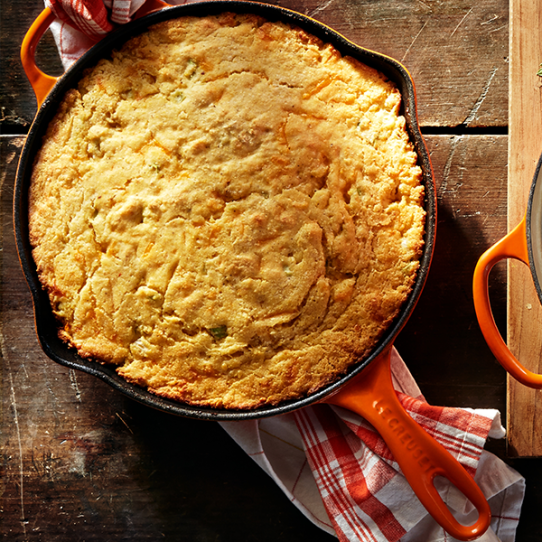A well-made cast iron skillet is an amazing gift for the cooks on your list. Incredibly versatile and nearly indestructible, a quality cast iron pan will provide a lifetime of cooking performance.
Products from a blue-chip producer like Lodge will run you $30-$50 for a skillet, and $75-$150 for an enameled Dutch oven, depending on the size. If you’re looking to step up your cast iron game, premier producers like Le Creuset offer gorgeous enameled versions of the same items for $150-$350. Outdoor gear shops like REI and LL Bean carry brands like Lodge, and cookware shops like Sur La Table carry the high end versions.

Bundle your cast iron gift with this chili pepper pan hot pan handle and a cookbook (I’m currently loving the Complete Cast Iron Cookbook), and the shopping is done.
These things are built like tanks and will last for a long time. They are made of iron, however, and that means a little extra care is required to keep them in great shape. Here are a few quick tips to pass along to your gift recipients that will help keep their new cast iron skillet in top condition for years and years to come.
Season the skillet before you cook
Cast iron skillets are at their best when they’ve been seasoned, that is, coated with a small amount of oil after each use. Seasoning with oil allows a thin layer to bond with the iron, creating a non-stick surface over time.
The secret is how the oil is applied. It’s not just a thin layer that matters - you’re looking for a thin layer of polymerized oil, which comes from heating the pan before applying. The process allows the oil to break down into a slick coating, greatly increasing the effectiveness.
The process is simple - put the pan on high heat until it starts to smoke a little. Turn off the heat. Carefully apply about a half-teaspoon of a neutral oil (like vegetable oil or even just shortening like Crisco), making sure to cover the entire surface including the sides. Use a folded napkin to spread the oil and keep fingers away from the heat. Then let it cool.

Continually sear and fry foods in it
The more you cook in cast iron, the more seasoning it will absorb. Use the skillet to fry shrimp, sear thick-cut pork chops, and to saute vegetables. Baking counts, too! Give this giant baked cinnamon roll recipe a go and know it'll be contributing to the health of the pan in the long run.
Clean the skillet as soon as possible
There are lots of opinions on this one. Wash it. Don’t wash it. Wash it but never use soap. So many conflicting suggestions…
The confusion usually arises because soap is meant to break down oil and remove it from cookware. If the pan has been seasoned, the assumption is the soap will clean it all away. That’s not really the case. If the skillet has been seasoned properly and frequently over it’s life, a quick scrub with soap and a sponge won't remove that. (It’s back to that whole bonded polymerization thing.)
What you shouldn’t do is soak the skillet, because prolonged exposure to soap will have a negative effect. If you can’t clean the pan immediately after using it, it’s better to leave it dirty until you can clean it and dry it right away. And if there's time, re-season it.

Last but not least, be sure to let your gift recipient know that their new cast iron can be used for cooking all kinds of delicious and easy meals. One of my favorite breakfast skillet recipes is this Crispy Potato, Chorizo, and Green Chili Hash with Avocado and Eggs. If they're more of an appetizer fan, this Spinach Artichoke Dip recipe is simple and a great way to get used to cooking with the pan.
And desserts are a...piece of cake, too. (Pun intended.) This Rum Raisin Apple Crumble is the perfect way to wrap up a day of holiday noshing.




